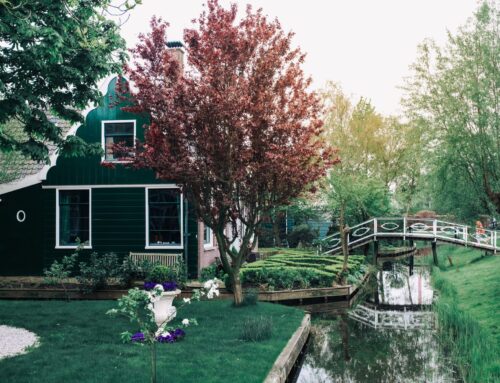Maintaining a healthy and attractive landscape requires regular care and attention. Whether you have a lush garden, a manicured lawn, or a combination of plants and hardscaping, proper maintenance is key to ensuring that your outdoor space thrives year-round. In this blog, we’ll cover essential landscape maintenance tips to help you keep your yard looking its best.
The Importance of Regular Landscape Maintenance
Regular maintenance is crucial for the health and longevity of your landscape. Without proper care, plants can become overgrown, lawns can develop bare spots, and weeds can take over. Additionally, neglected landscapes are more susceptible to pests, diseases, and environmental stressors, such as drought or extreme temperatures.
By following a consistent maintenance routine, you can prevent problems before they arise and ensure that your landscape remains beautiful and functional.
Essential Landscape Maintenance Tasks
There are several key tasks that should be performed regularly to maintain a healthy and attractive landscape. These include lawn care, pruning, watering, and pest control.
Lawn Care
A well-maintained lawn provides the foundation for a beautiful landscape. To keep your lawn healthy and green, it’s important to follow proper mowing, fertilization, and irrigation practices.
- Mowing: Mow your lawn regularly to keep the grass at the appropriate height. Avoid cutting more than one-third of the grass blades at a time, as this can stress the lawn and lead to bare spots. Keep your mower blades sharp to ensure a clean cut.
- Fertilization: Fertilize your lawn based on the specific needs of your grass type. Use slow-release fertilizers to provide nutrients over time, and avoid over-fertilizing, which can lead to excessive growth and increased maintenance.
- Irrigation: Water your lawn deeply but infrequently to encourage deep root growth. Early morning is the best time to water, as it allows the grass to dry before evening, reducing the risk of fungal diseases.
Pruning and Trimming
Regular pruning and trimming help keep your plants healthy and looking their best. Pruning removes dead or damaged branches, encourages new growth, and improves air circulation within the plant. It also helps maintain the shape and size of trees and shrubs, preventing them from becoming overgrown.
- Pruning Trees and Shrubs: Prune trees and shrubs during their dormant season to avoid stressing the plants. Use clean, sharp tools to make clean cuts, and remove any branches that are crossing, rubbing, or growing in the wrong direction.
- Trimming Hedges: Trim hedges regularly to maintain their shape and encourage dense growth. Use hedge trimmers for a clean and even cut, and avoid trimming during hot, dry weather to prevent stress on the plants.
Watering
Proper watering is essential for maintaining a healthy landscape. Different plants have different water requirements, so it’s important to water each area of your yard according to its specific needs.
- Deep Watering: Water deeply and less frequently to encourage deep root growth. Shallow watering can lead to weak roots and plants that are more susceptible to drought.
- Watering Early: Water your plants early in the morning to reduce evaporation and give them time to absorb moisture before the heat of the day. Avoid watering in the evening, as wet foliage can encourage fungal growth.
Weed Control
Weeds compete with your plants for water, nutrients, and sunlight, making it important to keep them under control. Regular weeding is essential to prevent weeds from taking over your landscape.
- Mulching: Apply a layer of mulch around your plants to suppress weed growth and retain soil moisture. Mulch also improves the appearance of your landscape and provides nutrients as it breaks down.
- Hand Weeding: For smaller gardens and flower beds, hand weeding is an effective way to remove weeds without the use of chemicals. Be sure to remove the entire root to prevent the weed from regrowing.
- Herbicides: For larger areas or more persistent weeds, consider using herbicides. Choose eco-friendly herbicides that are safe for the environment and follow the manufacturer’s instructions carefully.
Seasonal Landscape Maintenance
Different seasons require different approaches to landscape maintenance. By adjusting your care routine based on the time of year, you can ensure that your yard stays healthy and vibrant.
Spring Maintenance
Spring is the time to refresh your landscape after the winter months. This is the ideal time for planting, fertilizing, and cleaning up debris from your yard.
- Planting: Spring is the best time to plant new flowers, shrubs, and trees. Choose plants that are suited to your climate and soil conditions, and be sure to water them regularly as they establish.
- Fertilizing: Apply fertilizer to your lawn and garden beds to encourage new growth. Use a slow-release fertilizer to provide nutrients throughout the growing season.
- Mulching: Add a fresh layer of mulch around your plants to retain moisture, suppress weeds, and improve the appearance of your landscape.
Summer Maintenance
During the hot summer months, it’s important to focus on watering and protecting your plants from heat stress.
- Watering: Water your plants deeply and early in the morning to help them survive the heat of the day. Be mindful of water restrictions in your area and adjust your watering schedule accordingly.
- Pruning: Prune any dead or damaged branches to encourage healthy growth and improve the overall appearance of your yard.





